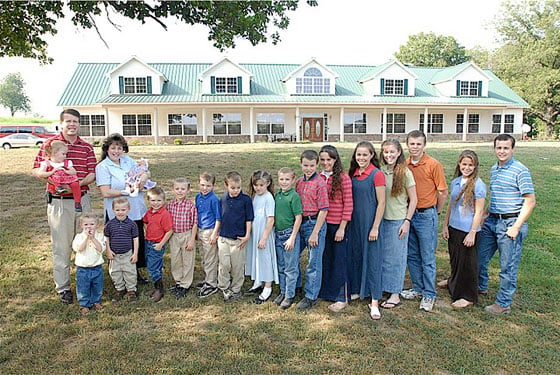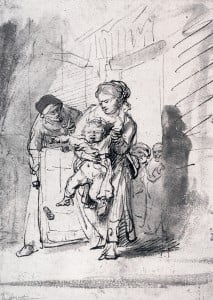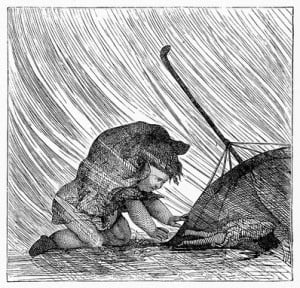This post is part of a series of nine posts. Please click here to start with the series Introduction.
The next day started out the same as pretty much any other day. We had breakfast, and my Hunnie went out to the office. But unlike an average weekday, as soon as he left, I put in a movie for the kids, plunked the baby into the bouncer and rushed to the computer. I hardly knew where to start; it was all so unknown to me. I typed in “what is transsexual?” and sat there staring at the screen. My gut reaction to new things was to learn as much as I could, and I had a lot to figure out. In fact, I spent the next few weeks doing constant research; it was pretty much all I could think about. My kids watched far more TV than usual as I spent hours reading whatever I could find on the subject. When my spouse was home I asked him question after question about his experience, and he tried to answer every question as honestly as he could.
For starters, I learned that “transsexual” was just one of the terms used in reference to people who did not feel that their gender matched their bodies. And since “transsexual” seemed to be used more often in reference to people who were living life in the opposite gender they had been assigned at birth, I started using the more encompassing term “transgender” instead.
The old term “transvestite” that I had heard my parents use was actually a name of a sexual fetish that comprised of crossdressing to get a sexual thrill of some kind. I had never seen my spouse crossdressed, but as soon as he came home for lunch I asked him if he ever did. He admitted that he had been crossdressing in private since he was young, but said that it didn’t do anything for him sexually. Back to the drawing board.
I learned about men who considered themselves “crossdressers” meaning that they dressed up as women sometimes for the fun of it, or to express their feminine side. I learned about gender dysphoria, the name for the persistent subconscious understanding that you were somehow the opposite gender than you had been assigned at birth, and in discovering that, I found that there were people who had been born physically female who had this condition as well. I read about transgendered people who had felt that life was better for them living as the opposite gender, and I read about transgendered people who had decided to get medical treatments to make their bodies feel more in tune with their minds.
Once I felt more acquainted with the terms, I started googling things like “married to a crossdresser” and “my husband is transgender.” Was there anyone out there who had this sort of experience? From what I could see, many people who faced this issue after marriage ended up divorced. The fear was crippling. Divorce wasn’t supposed to be a word that Christian couples even used, and yet here it was popping up everywhere in marriages like mine. I saved countless links organized in folders to read again later or use for reference. It was so much information. I felt overwhelmed. Sometimes I cried at the computer, trying to understand what was going on and what was going to happen to us.
I prayed, again and again, that God would send a sign, or tell me what all of this meant, or at least give me an inkling of what to do. I googled things like “Christian and transgender” and “what does the bible have to say about transsexuals”. And I read through page after horrible page of links from ministries and groups who condemned LGBTQ people and insisted that they were deviant and would cause harm to children.
Many of these links said that they could help fix people with these perverse tendencies, but I still struggled to match what they were claiming with my Hunnie. These groups claimed that they had all the answers as to how these “perversions” were started, so I investigated, but all of the questions I bombard my spouse with met dead ends. He had never been sexually abused. He had never been exposed to explicit sexual materials. He had not had an abusive or absent father. He had not had an overly controlling mother, or a mother who wished he was a girl. I asked if he was gay, but while he admitting to having had same-sex attraction at times, he had always been more sexually attracted to girls, which had given him hope that maybe the gender dysphoria would magically go away if he just got married and had kids and had that role to fill, except it hadn’t. Even wracking our brains together, we just couldn’t get to the bottom of what had caused this problem, it just was.
I was encouraged to find that the teachings of the Catholic church were different than many of the Christian groups I encountered. They didn’t teach that being gay or transgendered was a special kind of sin that was extra evil or caused by anything. Instead, they taught that some people were born with these desires but God decreed that they must not act on them. This was a relief to me: being gay or transgendered was no different than any other struggle. I even felt encouraged in regard to the same sex attraction I experienced myself. Maybe I wasn’t evil or demon-possessed, I just had an unnatural interest that I needed to continue to battle, just like my spouse.
More than anything else I felt blessed to have a spouse who had trusted me enough to tell me his struggle. With our prayers and efforts combined, surely together we could conquer this issue. I wanted to help him in this fight he had been struggling with alone for so long. There was nowhere else to go for help – my spouse was a pastor, and I knew what happened to pastors who were suspected of being gay or queer in any way. My spouse had remained faithful to me and he was committed to our marriage. So he had a strange feminine side that I hadn’t known about, that was OK with me.















